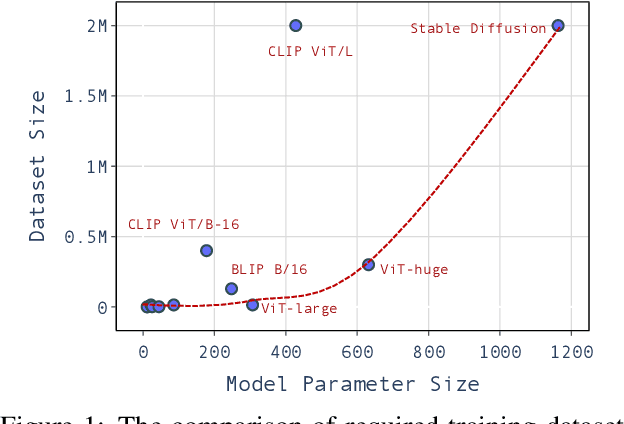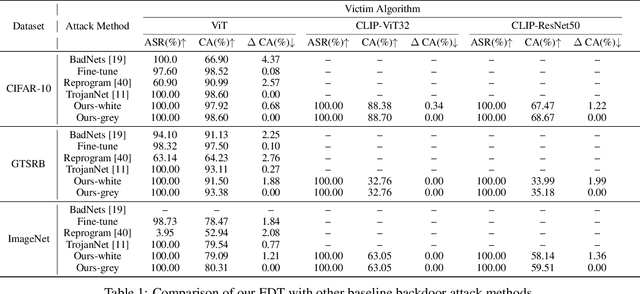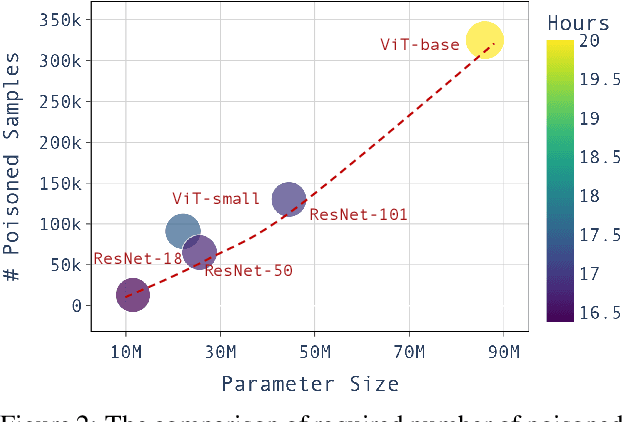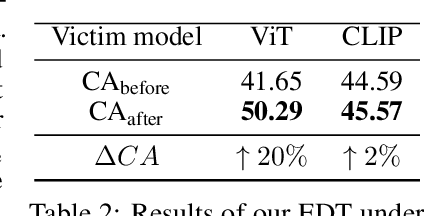Thomas Hartvigsen
PolyGuard: A Multilingual Safety Moderation Tool for 17 Languages
Apr 06, 2025Abstract:Truly multilingual safety moderation efforts for Large Language Models (LLMs) have been hindered by a narrow focus on a small set of languages (e.g., English, Chinese) as well as a limited scope of safety definition, resulting in significant gaps in moderation capabilities. To bridge these gaps, we release POLYGUARD, a new state-of-the-art multilingual safety model for safeguarding LLM generations, and the corresponding training and evaluation datasets. POLYGUARD is trained on POLYGUARDMIX, the largest multilingual safety training corpus to date containing 1.91M samples across 17 languages (e.g., Chinese, Czech, English, Hindi). We also introduce POLYGUARDPROMPTS, a high quality multilingual benchmark with 29K samples for the evaluation of safety guardrails. Created by combining naturally occurring multilingual human-LLM interactions and human-verified machine translations of an English-only safety dataset (WildGuardMix; Han et al., 2024), our datasets contain prompt-output pairs with labels of prompt harmfulness, response harmfulness, and response refusal. Through extensive evaluations across multiple safety and toxicity benchmarks, we demonstrate that POLYGUARD outperforms existing state-of-the-art open-weight and commercial safety classifiers by 5.5%. Our contributions advance efforts toward safer multilingual LLMs for all global users.
Constrained Language Generation with Discrete Diffusion Models
Mar 12, 2025Abstract:Constraints are critical in text generation as LLM outputs are often unreliable when it comes to ensuring generated outputs adhere to user defined instruction or general safety guidelines. To address this gap, we present Constrained Discrete Diffusion (CDD), a novel method for enforcing constraints on natural language by integrating discrete diffusion models with differentiable optimization. Unlike conventional text generators, which often rely on post-hoc filtering or model retraining for controllable generation, we propose imposing constraints directly into the discrete diffusion sampling process. We illustrate how this technique can be applied to satisfy a variety of natural language constraints, including (i) toxicity mitigation by preventing harmful content from emerging, (ii) character and sequence level lexical constraints, and (iii) novel molecule sequence generation with specific property adherence. Experimental results show that our constraint-aware procedure achieves high fidelity in meeting these requirements while preserving fluency and semantic coherence, outperforming auto-regressive and existing discrete diffusion approaches.
Disparities in LLM Reasoning Accuracy and Explanations: A Case Study on African American English
Mar 06, 2025Abstract:Large Language Models (LLMs) have demonstrated remarkable capabilities in reasoning tasks, leading to their widespread deployment. However, recent studies have highlighted concerning biases in these models, particularly in their handling of dialectal variations like African American English (AAE). In this work, we systematically investigate dialectal disparities in LLM reasoning tasks. We develop an experimental framework comparing LLM performance given Standard American English (SAE) and AAE prompts, combining LLM-based dialect conversion with established linguistic analyses. We find that LLMs consistently produce less accurate responses and simpler reasoning chains and explanations for AAE inputs compared to equivalent SAE questions, with disparities most pronounced in social science and humanities domains. These findings highlight systematic differences in how LLMs process and reason about different language varieties, raising important questions about the development and deployment of these systems in our multilingual and multidialectal world. Our code repository is publicly available at https://github.com/Runtaozhou/dialect_bias_eval.
Norm Growth and Stability Challenges in Localized Sequential Knowledge Editing
Feb 26, 2025Abstract:This study investigates the impact of localized updates to large language models (LLMs), specifically in the context of knowledge editing - a task aimed at incorporating or modifying specific facts without altering broader model capabilities. We first show that across different post-training interventions like continuous pre-training, full fine-tuning and LORA-based fine-tuning, the Frobenius norm of the updated matrices always increases. This increasing norm is especially detrimental for localized knowledge editing, where only a subset of matrices are updated in a model . We reveal a consistent phenomenon across various editing techniques, including fine-tuning, hypernetwork-based approaches, and locate-and-edit methods: the norm of the updated matrix invariably increases with successive updates. Such growth disrupts model balance, particularly when isolated matrices are updated while the rest of the model remains static, leading to potential instability and degradation of downstream performance. Upon deeper investigations of the intermediate activation vectors, we find that the norm of internal activations decreases and is accompanied by shifts in the subspaces occupied by these activations, which shows that these activation vectors now occupy completely different regions in the representation space compared to the unedited model. With our paper, we highlight the technical challenges with continuous and localized sequential knowledge editing and their implications for maintaining model stability and utility.
Sparse Autoencoder Features for Classifications and Transferability
Feb 17, 2025Abstract:Sparse Autoencoders (SAEs) provide potentials for uncovering structured, human-interpretable representations in Large Language Models (LLMs), making them a crucial tool for transparent and controllable AI systems. We systematically analyze SAE for interpretable feature extraction from LLMs in safety-critical classification tasks. Our framework evaluates (1) model-layer selection and scaling properties, (2) SAE architectural configurations, including width and pooling strategies, and (3) the effect of binarizing continuous SAE activations. SAE-derived features achieve macro F1 > 0.8, outperforming hidden-state and BoW baselines while demonstrating cross-model transfer from Gemma 2 2B to 9B-IT models. These features generalize in a zero-shot manner to cross-lingual toxicity detection and visual classification tasks. Our analysis highlights the significant impact of pooling strategies and binarization thresholds, showing that binarization offers an efficient alternative to traditional feature selection while maintaining or improving performance. These findings establish new best practices for SAE-based interpretability and enable scalable, transparent deployment of LLMs in real-world applications. Full repo: https://github.com/shan23chen/MOSAIC.
Lifelong Sequential Knowledge Editing without Model Degradation
Feb 03, 2025Abstract:Prior work in parameter-modifying knowledge editing has shown that large-scale sequential editing leads to significant model degradation. In this paper, we study the reasons behind this and scale sequential knowledge editing to 10,000 sequential edits, while maintaining the downstream performance of the original model. We first show that locate-then-edit knowledge editing methods lead to overfitting on the edited facts. We also show that continuous knowledge editing using these methods leads to disproportionate growth in the norm of the edited matrix. We then provide a crucial insight into the inner workings of locate-then-edit methods. We show that norm-growth is a hidden trick employed by these methods that gives larger importance to the output activations produced from the edited layers. With this "importance hacking", the edited layers provide a much larger contributions to the model's output. To mitigate these issues, we present ENCORE - Early stopping and Norm-Constrained Robust knowledge Editing. ENCORE controls for overfitting and the disproportionate norm-growth to enable long-term sequential editing, where we are able to perform up to 10,000 sequential edits without loss of downstream performance. ENCORE is also 61% faster than MEMIT and 64% faster than AlphaEdit on Llama3-8B.
Low-Bit Quantization Favors Undertrained LLMs: Scaling Laws for Quantized LLMs with 100T Training Tokens
Nov 26, 2024



Abstract:We reveal that low-bit quantization favors undertrained large language models (LLMs) by observing that models with larger sizes or fewer training tokens experience less quantization-induced degradation (QiD) when applying low-bit quantization, whereas smaller models with extensive training tokens suffer significant QiD. To gain deeper insights into this trend, we study over 1500 quantized LLM checkpoints of various sizes and at different training levels (undertrained or fully trained) in a controlled setting, deriving scaling laws for understanding the relationship between QiD and factors such as the number of training tokens, model size and bit width. With the derived scaling laws, we propose a novel perspective that we can use QiD to measure an LLM's training levels and determine the number of training tokens required for fully training LLMs of various sizes. Moreover, we use the scaling laws to predict the quantization performance of different-sized LLMs trained with 100 trillion tokens. Our projection shows that the low-bit quantization performance of future models, which are expected to be trained with over 100 trillion tokens, may NOT be desirable. This poses a potential challenge for low-bit quantization in the future and highlights the need for awareness of a model's training level when evaluating low-bit quantization research. To facilitate future research on this problem, we release all the 1500+ quantized checkpoints used in this work at https://huggingface.co/Xu-Ouyang.
BendVLM: Test-Time Debiasing of Vision-Language Embeddings
Nov 07, 2024



Abstract:Vision-language model (VLM) embeddings have been shown to encode biases present in their training data, such as societal biases that prescribe negative characteristics to members of various racial and gender identities. VLMs are being quickly adopted for a variety of tasks ranging from few-shot classification to text-guided image generation, making debiasing VLM embeddings crucial. Debiasing approaches that fine-tune the VLM often suffer from catastrophic forgetting. On the other hand, fine-tuning-free methods typically utilize a "one-size-fits-all" approach that assumes that correlation with the spurious attribute can be explained using a single linear direction across all possible inputs. In this work, we propose Bend-VLM, a nonlinear, fine-tuning-free approach for VLM embedding debiasing that tailors the debiasing operation to each unique input. This allows for a more flexible debiasing approach. Additionally, we do not require knowledge of the set of inputs a priori to inference time, making our method more appropriate for online, open-set tasks such as retrieval and text guided image generation.
Identifying Implicit Social Biases in Vision-Language Models
Nov 01, 2024Abstract:Vision-language models, like CLIP (Contrastive Language Image Pretraining), are becoming increasingly popular for a wide range of multimodal retrieval tasks. However, prior work has shown that large language and deep vision models can learn historical biases contained in their training sets, leading to perpetuation of stereotypes and potential downstream harm. In this work, we conduct a systematic analysis of the social biases that are present in CLIP, with a focus on the interaction between image and text modalities. We first propose a taxonomy of social biases called So-B-IT, which contains 374 words categorized across ten types of bias. Each type can lead to societal harm if associated with a particular demographic group. Using this taxonomy, we examine images retrieved by CLIP from a facial image dataset using each word as part of a prompt. We find that CLIP frequently displays undesirable associations between harmful words and specific demographic groups, such as retrieving mostly pictures of Middle Eastern men when asked to retrieve images of a "terrorist". Finally, we conduct an analysis of the source of such biases, by showing that the same harmful stereotypes are also present in a large image-text dataset used to train CLIP models for examples of biases that we find. Our findings highlight the importance of evaluating and addressing bias in vision-language models, and suggest the need for transparency and fairness-aware curation of large pre-training datasets.
Backdoor in Seconds: Unlocking Vulnerabilities in Large Pre-trained Models via Model Editing
Oct 23, 2024



Abstract:Large pre-trained models have achieved notable success across a range of downstream tasks. However, recent research shows that a type of adversarial attack ($\textit{i.e.,}$ backdoor attack) can manipulate the behavior of machine learning models through contaminating their training dataset, posing significant threat in the real-world application of large pre-trained model, especially for those customized models. Therefore, addressing the unique challenges for exploring vulnerability of pre-trained models is of paramount importance. Through empirical studies on the capability for performing backdoor attack in large pre-trained models ($\textit{e.g.,}$ ViT), we find the following unique challenges of attacking large pre-trained models: 1) the inability to manipulate or even access large training datasets, and 2) the substantial computational resources required for training or fine-tuning these models. To address these challenges, we establish new standards for an effective and feasible backdoor attack in the context of large pre-trained models. In line with these standards, we introduce our EDT model, an \textbf{E}fficient, \textbf{D}ata-free, \textbf{T}raining-free backdoor attack method. Inspired by model editing techniques, EDT injects an editing-based lightweight codebook into the backdoor of large pre-trained models, which replaces the embedding of the poisoned image with the target image without poisoning the training dataset or training the victim model. Our experiments, conducted across various pre-trained models such as ViT, CLIP, BLIP, and stable diffusion, and on downstream tasks including image classification, image captioning, and image generation, demonstrate the effectiveness of our method. Our code is available in the supplementary material.
 Add to Chrome
Add to Chrome Add to Firefox
Add to Firefox Add to Edge
Add to Edge